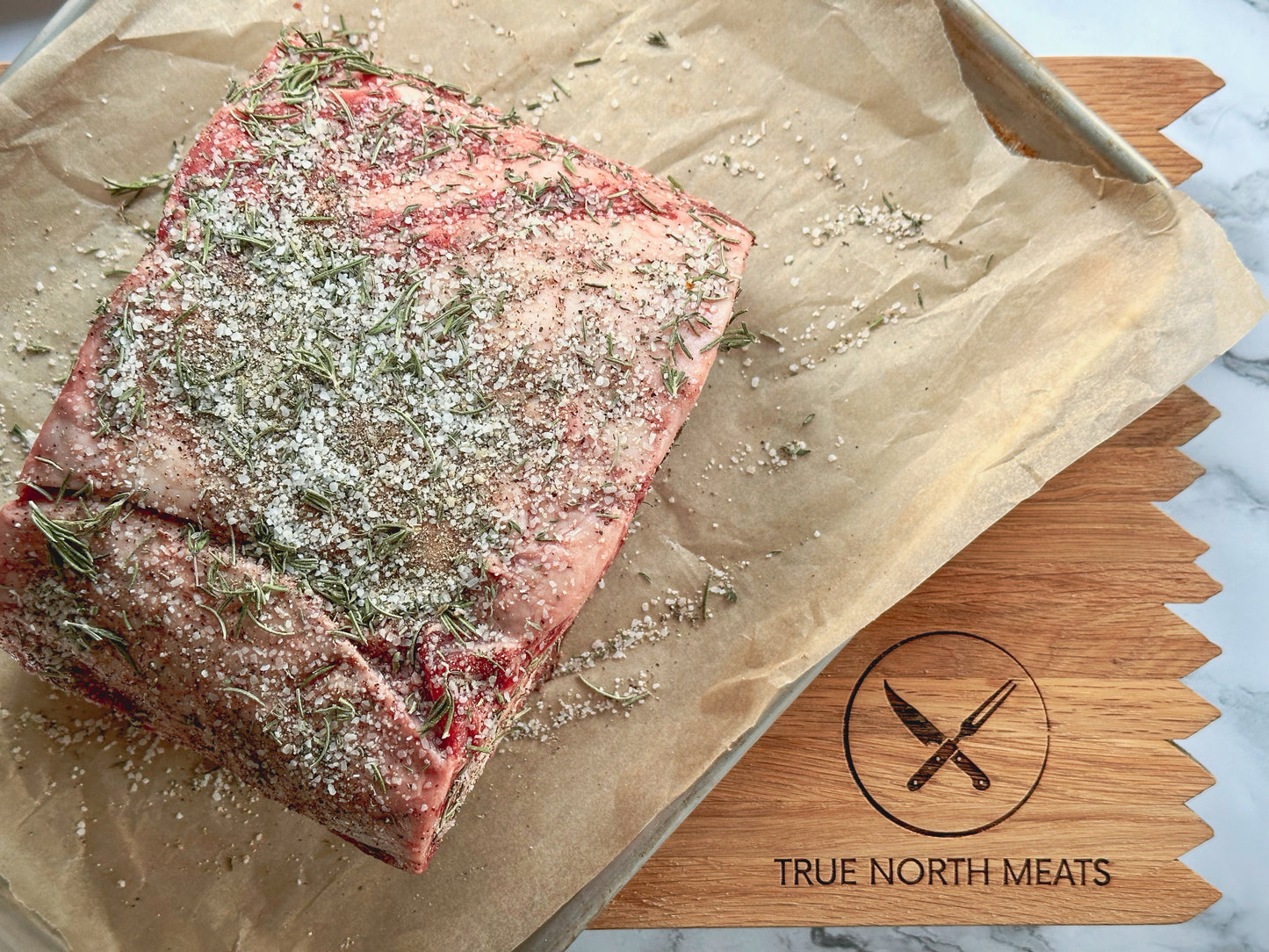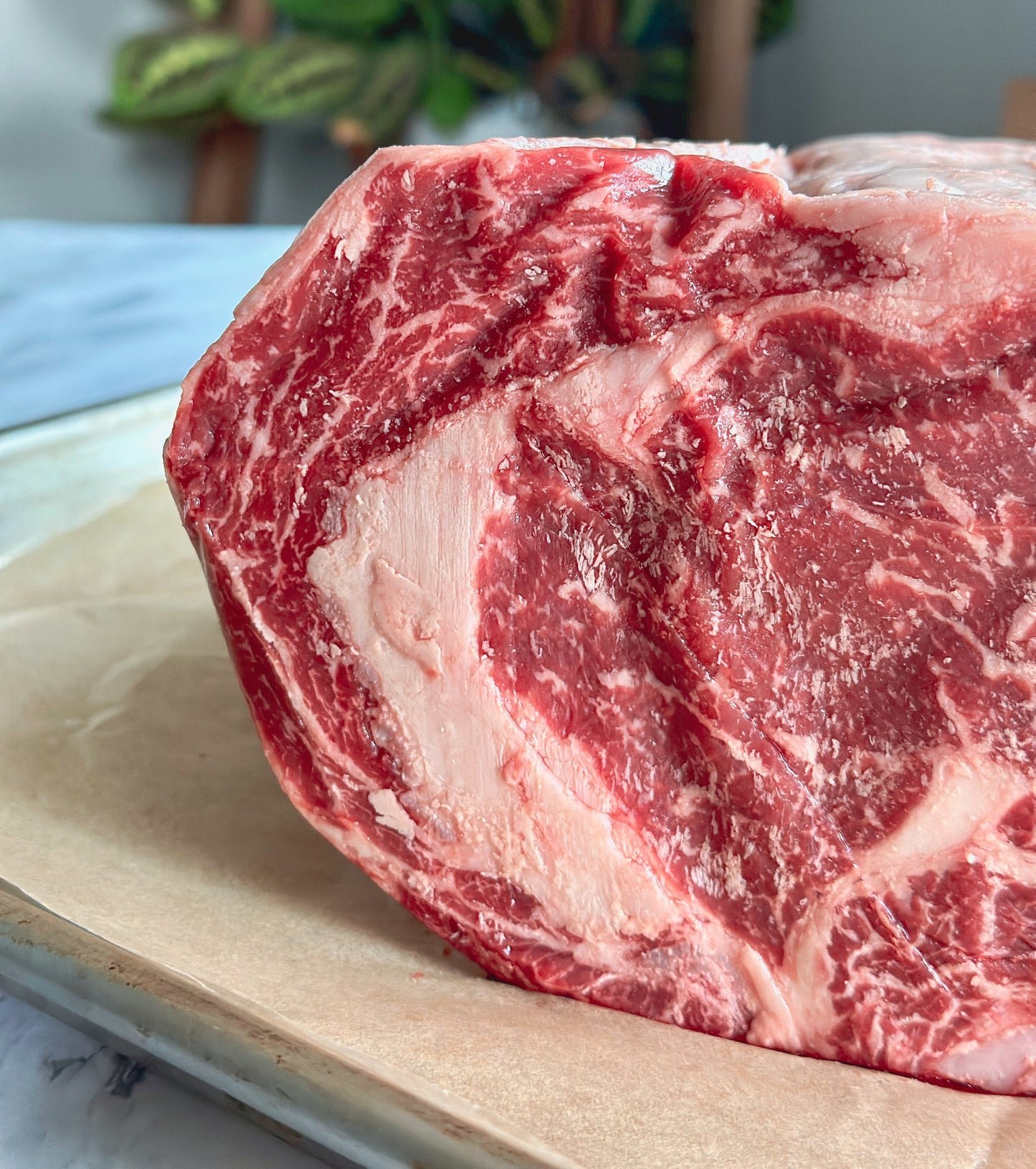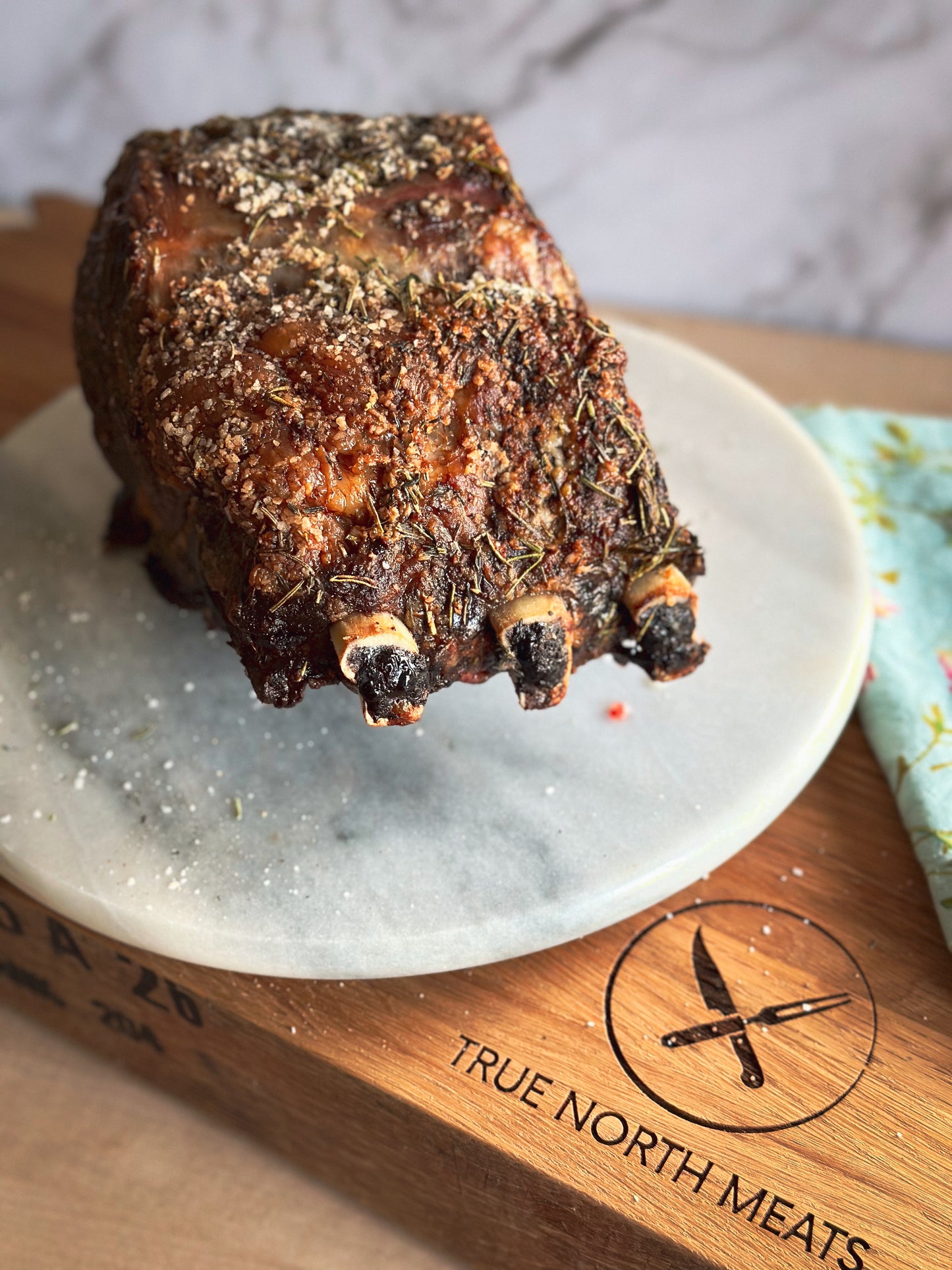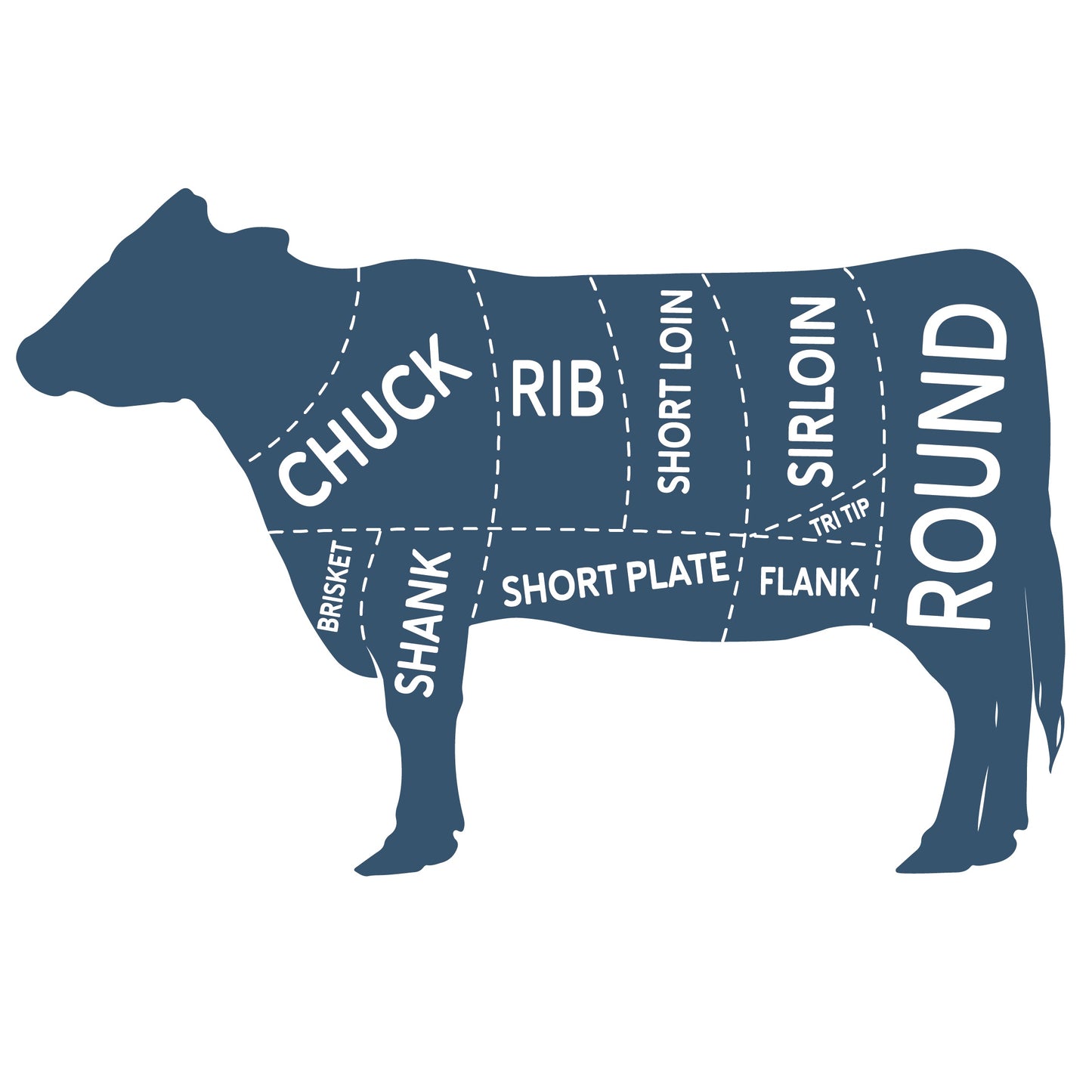When purchasing a custom share of beef or pork, you'll see the terms "hanging weight" and "take-home yield." Understanding these two terms is crucial for knowing what you're getting so you can be happy with your purchase of True North Meats!
Here’s a breakdown of what we mean and how they differ:
Hanging Weight
Hanging weight, also known as "carcass weight," is the weight of the animal after it has been slaughtered and dressed but before it has been butchered into individual cuts. This weight includes the bones, fat, and some other parts that will be removed during further processing.
The hanging weight is the most consistent way to measure the carcass before getting into custom the cuts.
- Includes: The carcass with bones, fat, and some inedible parts.
- Excludes: The hide, internal organs, and head (these are removed during dressing).
- Used For: Pricing; farmers often price the meat based on hanging weight.
Take-Home Yield
Take-home yield refers to the actual amount of meat you receive after the carcass has been butchered into individual cuts and the bones, excess fat, and other non-meat parts have been removed. The yield is roughly 55%-70% of the hanging weight, depending on how you've requested it to be processed.
- Includes: Usable meat cuts like steaks, roasts, ground meat, and some edible organs (if requested).
- Excludes: Bones, most fat, and other inedible or unwanted parts.
- Important For: Understanding the true amount of meat you'll get and planning your meals.
Example Calculation
Let's use a practical example to illustrate the difference:
- Average Hanging Weight of Half Share of Beef: 365 pounds
- Yield Percentage: Between 55% and 70%
Lower End Yield (55%):
Higher End Yield (70%):
365lbs×0.70=255.5lbs
So, from a hanging weight of 365 pounds, you can expect to take home between approximately 200.75 and 255.5 pounds of beef.
Why This Matters
- Cost Understanding: Knowing the difference helps you understand the true cost per pound of the meat you'll be eating.
- Freezer Space: Helps you plan how much freezer space you'll need.
- Meal Planning: Assists in planning how long the meat will last and how it fits into your family's diet.
By understanding the difference between hanging weight and take-home yield, you can make more informed decisions when purchasing meat shares, ensuring you get the best value and enough high-quality meat for your needs.
If you have more questions, send us an email and we'll be happy to help!







